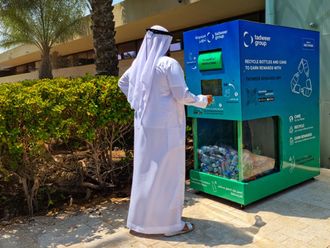
In 2010, science writer Eli Kintisch called geoengineering “a bad idea whose time has come” . It is considered by many to be the ultimate admission of our failure to curb carbon emissions — a tech-fix that excuses continued carbon gluttony in the industrialised world.
A report released recently by the American National Academies of Sciences (NAS) said tinkering with the global climate now would be “irrational and irresponsible” and climate change can only be avoided by cutting emissions. But the influential group of 16 scientists who authored the report urged policymakers to commit to further research into some geoengineering techniques.
Should there come a time when the world must consider more extreme interventions in the climate, asked Marcia McNutt, the chair of the committee: “Do we want those decisions to be kneejerk reactions? Or do we want them to be made with a wealth of information?”
The two-volume report separates geoengineering into two distinct classes. Carbon dioxide removal (CDR) techniques would suck the greenhouse gas out of the atmosphere and lock it away underground or in the oceans. Albedo modification (AM) involves increasing the reflectivity (albedo) of the earth so the warming effect from the sun is diminished.
A number of techniques have been proposed within these classes. These range from the sensible — replanting forests — to the outlandish — enclose the earth in a ring of space dust to block the sun’s rays. In between lie dozens of technologies, most still theoretical, with the potential to ameliorate or reverse the effects of climate change. In general the report finds that removing carbon from the atmosphere had the advantage of being less risky but more expensive and a long way off. Whereas tampering with the earth’s reflectivity could be done now, at less cost but could have massive unintended consequences.
Stuart Haszeldine, a professor of carbon capture and storage at the University of Edinburgh, said: “The US National Academy report makes a smart distinction between slowly and deliberately putting carbon back underground, and tinkering with sunlight reflection and adjusting the atmosphere. The first is slower, do-able, visible, and controllable but will cost more. The second is cheaper in the short term, but is poorly understood, will create global regions who are losers, and also means that humans have to keep maintaining the earth’s annual atmospheric injection.”
If the global community were to engage in AM, the most likely way would be to send sulphur-burning aircraft into the stratosphere or within clouds. The compounds released, known as aerosols, absorb and scatter sunlight and affect the brightness of clouds. Modelling suggests that enough aerosols could have a substantive cooling effect. The NAS warned the side effects of such a programme were unpredictable and there could be far reaching human and environmental impacts, including further depletion of the ozone layer and changes to rainfall.
Aside from the scientific uncertainty, the deployment of AM would raise serious geopolitical questions. Because it is simple and relatively cheap, a single nation could decide to send sulphur into the atmosphere. Professor Steve Rayner, from Oxford University geoengineering programme and co-author of one of the most influential reports on the subject in 2009, said this type of unilateral action could lead to conflict.
“There are issues to do with the perceptions of the technology that make doing the stratospheric aerosol injection something that would be politically very dangerous to do without an international agreement ... If you were to do it, any negative event that occurred would be attributed by some party or another to that intervention.” Levels of short-lived aerosols will need constant replenishment, locking the human race into a project of climate maintenance that could last hundreds of years. And in the end, spraying aerosols into the atmosphere does nothing to help the original problem — the accumulation of greenhouse gases that are warming the planet.
It is a solution that requires another solution. Nevertheless, the report calls for more research and even small-scale field trials of the technology. This would represent a significant step beyond the today’s science. One of the authors of the report, Raymond Pierrehumbert, said much of the research required into AM was useful, fundamental climate science.
But given the large questions over the practicality of the technology further steps would be a mistake. “What is the point? What is it actually good for? What is the point of actually investing in a research programme that is specifically targeted at some aspects of the technology of albedo modification that you wouldn’t do for understanding climate in general. The report leaves the door open for doing some of those things ... But my own feeling is that albedo modification really is a distraction from the main job of keeping the carbon dioxide emissions down.”
The other proposed climate intervention is the removal of carbon dioxide from the atmosphere. Designs for this range from assisting natural processes that lock carbon away — reforestation, planting crops that replenish soil carbon and fertilising the oceans with iron — to technologies that remove carbon from the air and then store it underground — bioenergy and carbon capture and storage (Beccs).
The fertilisation of oceans would create a bloom of marine plants that store carbon, die and sink to the sea floor. However, like albedo modification, this would be an experiment that would occur in the global commons and could have unintended, border-crossing consequences. “On the other hand ... you could build the CDR [Beccs] technology within national territories, without the need for an international agreement to do this,” says Rayner. In the most significant and comprehensive report on climate change to date, the Intergovernmental Panel on Climate Change (IPCC) noted that almost all pathways towards a safe climate involved the deployment of Beccs.
Power stations that burn plants for energy would be fitted with devices to capture the carbon released. This would be pumped underground and stored for eternity. Beccs would actually reduce atmospheric carbon levels, allowing the world to overshoot its carbon budget (which looks increasingly likely).
There’s only one problem — there is no such technology at present. A few pilots have been tested but Beccs is still largely being done on paper. “You have to build an industry that is essentially reverse engineering two hundred years of the fossil fuel industry on a global scale,” says Rayner. “There are real problems there with the length of time it would take to ramp up an industry on a scale that is actually going to make a difference to the atmosphere.”
The NAS authors stress that geoengineering is a poor alternative to reducing the carbon emissions that cause climate change (known as mitigation). But they go on to say: “Mitigation, although technologically feasible, has been difficult to achieve for political, economic, and social reasons that may persist well into the future ... For that reason, it may be prudent to examine additional options for limiting the risks from climate change.”
In other words, despite being more expensive, more dangerous and less likely to work, geoengineering technologies should be considered because they do not conflict with the interests of the world’s most powerful and influential companies and countries.
Clive Hamilton, a professor of public ethics at Charles Sturt University in New South Wales, Australia, believes this could have serious implications for the politics of climate change. “The report treats as only a theoretical concern the possibility that a major geoengineering research programme would reduce political incentives to reduce carbon emissions. But anyone who has watched world leaders seize on carbon capture and storage as a means of having our cake and eating it can see what is coming. The world lost 10 years chasing the chimera of ‘clean coal’.”
In her recent book on climate change , social activist Naomi Klein devoted an entire chapter to geoengineering. She said geoengineering could be seen as a kind of Noah’s ark, a last minute, supernatural intervention. “If geoengineering has anything going for it, it is that it slots perfectly into our most hackneyed cultural narrative ... It’s the one that tells us that, at the very last minute, some of us (the ones that matter) are going to be saved.”
Rachel Smolker of NGO BiofuelWatch goes further, suggesting that geoengineering research is being actively promoted by vested interests. “The geoengineering clique is taking advantage of this situation to promote their planetary technological manipulations. Some of the most avid promoters of geoengineering have links to the fossil fuel industries and to institutions that have backed climate denial.”
These links have previously been reported by the Guardian. Some geoengineering technologies are ill-contrived. Albedo modification is dangerous and does not address the initial problem of atmospheric carbon. But removing some carbon from the atmosphere may buy us some time in the difficult transition ahead. Slowing, climate change means saving lives and reducing suffering in the world’s most vulnerable communities and, although it may look like failure, must be considered.
Guardian News & Media Ltd













